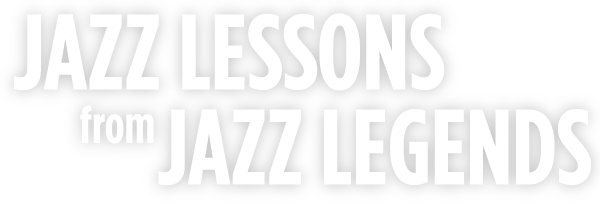You’ve seen it. You’ve probably done it. Some people call it stank-face but I call it…jazz-face:

It usually happens when you hear something so good that you can’t help but crinkle your nose and turn your mouth down like you’ve just walked by stankiest dumpster behind the greasiest diner on the hottest day in Houston.
Common causes of jazz face include playing in 7, quoting an obscure tune, or just swinging very very hard. In my experience, however, a well-placed chord substitution can be the most potent inflicter of jazz-face in the musician’s arsenal.
And one of the easiest and most effective ways to reharmonize chord changes is to change the quality of the chord without changing the root. These work great in a pre-written arrangement because you can keep the integrity of the original root movement. They also work exceptionally well in improvisation because, as a soloist, you can do it on the fly and it won’t trip up a good rhythm section.
RHYTHM SECTION NOTE: It’s not a great idea to throw reharmonizations at soloists and singers on the fly unless you know they are comfortable with it. Make sure you’re always serving the music first.
1. Using a diminished chord as a substitution for a major chord
This is a very common substitution, especially on ballads. It creates a dreamy effect in place of the more stable major chord. Example 1A is the last two bars of “My Foolish Heart” with some typical changes:
This sound also works great as a pass-thru to the major chord. Check out the first three bars of “There Will Never Be Another You”:
EX. 1C
Now, let’s use that diminished chord to set up the major chord:
EX. 1D
2. Using the minor7sus5 as a substitution for a minor chord
This sub just raises one note of the chord, the 5th, up one half step. This small change makes a big difference, though. It changes what may be a Dorian or melodic minor sound into an Aeolian sound. The result is modern and thrilling. Let’s take the first two bars of “Alone Together”:
EX. 2A
Now, let’s suspend and resolve the 5th. We can certainly call this the minor7sus5 but I prefer to think of it as a slash chord:
EX. 2B
The movement of the Bb resolving to the A is so satisfying and takes us just briefly out of that B-natural, Dorian mode. Let’s hear how this suspended 5th sounds in a 2-5-1, resolving up. Here are some typical changes to Miles Davis’ “Solar”:
EX. 2C
Now let’s suspend the 5th on both of the minor chords to get some nice inner-voice movement:
EX. 2D
Hear that great chromatic movement in the left hand in bars 3 and 4?
3. Dominant chords can sub almost anything
Dominant chords are natural choices for substitutions for almost anything (at least anything that doesn’t have a major 7). One of the first subs most people learn is the “5 of 5” in a 2-5-1. We simply take the 2, usually a min7 chord, and make it dominant (Dmin7-G7-Cmaj7 becomes D7-G7-Cmaj7). We can do this on virtually any chord and it won’t sound bad, so long as it doesn’t clash with the melody. Let’s go back to “Alone Together” and change the minor 2-5 in bar 2 to all dominant chords:
EX. 3A
Even when the melody is the minor 3rd of the chord, we can use a dominant. We’ll just use a dominant7#9 as shown in the 3rd bar of “There Will Never Be Another You”:
EX. 3B
Any of these can be used in your improvised solos as well. But try not to over-do it.; be musical. I like to firmly establish the regular changes and use substitutions as a way to diverge from the changes as my solo develops. And it works great. It’s a sure-fire way to inflict jazz-face on a listener. You know the one:

Adam Maness














4 thoughts on “Easy Reharmonization: Keep the Root, Change the Chord Quality”
“We can certainly call this the minor7sus5 but I prefer to think of it as a slash chord”
It’s better to harmonically consider this chord as the 6th chord of natural minor (aeolien), with his third on bass…
in C minor, Ab (VI) bass C (third)
Some pianists, as Lyle Mays, use, instead of C G Eb on left hand (Cm), C Ab Eb (Ab bass C)
In relative major (Eb), you find this progression : IV (third on bass), V (third on bass), I, since JS BACH…
Christian Ambroise
I find the terminology of m-7sus5 to be very confusing. Wouldn’t min7+5 be more idiomatic for jazz? But overall, I really do prefer the slash chord approach as it suggest better how the internal voices would move.
Different strokes…
Eric
Hi Eric,
That’s interesting. I think using min7+5 implies that the 5th is always augmented, which it wouldn’t be. In this case, the natural 5th would still be used in the scale. I used min7sus5 like I would use 7sus. The natural 3rd is suspended in the chord but still used in the scale when improvising. As I wrote in the blog, I would never think about this chord in any way other than Bb/D or Bbadd2/D.
Thanks Adam,
I like the term min7sus5. It’s not a term I have used ( usually I think Bb triad ) so for me it’s an interesting way to think of it as from my classical training sus notes resolve. Ex. sus4 resolves down to a 3rd of the scale. So I would think of min7sus5 as being on it’s way to resolving down to 5.
Fintan O’Neill.
Comments are closed.